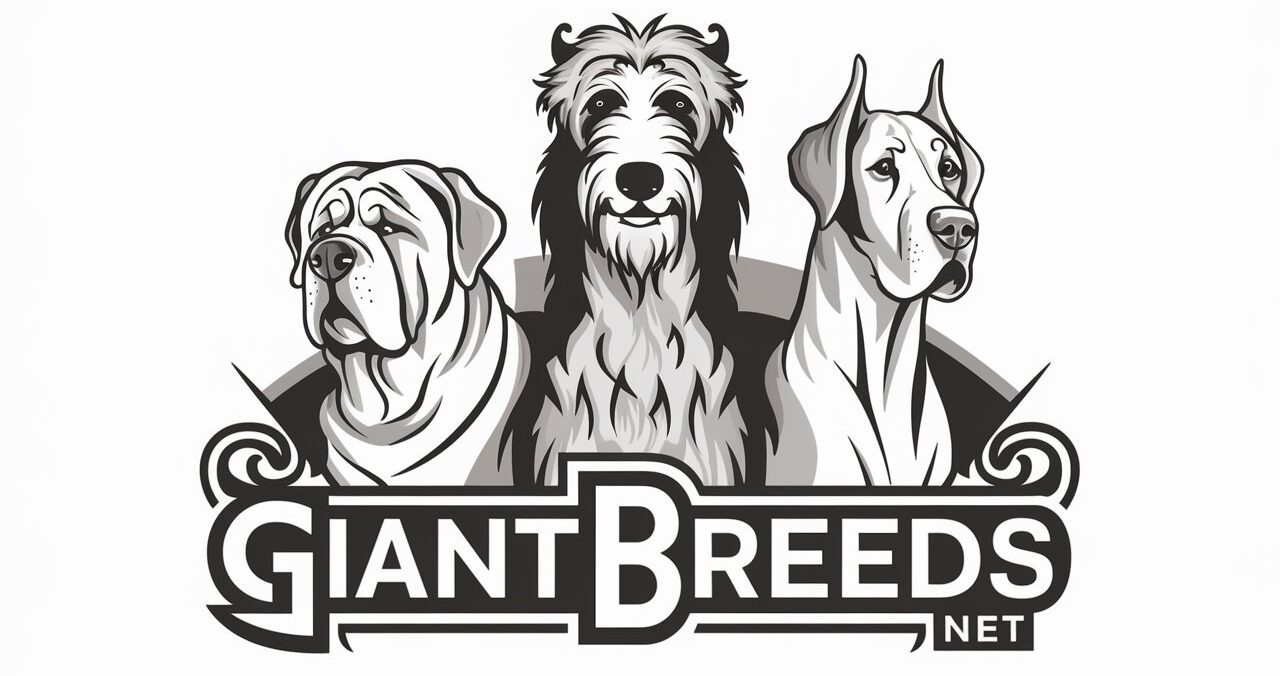

The Saint Bernard: A Gentle Giant’s Profile
The Saint Bernard is a breed that epitomizes the term “gentle giant.” With their imposing size and calm demeanor, they have become a beloved breed for families and rescue services alike. Here, we delve into the characteristics of the Saint Bernard, adding to the already noted traits with some often overlooked aspects.
Size:
Indeed, Saint Bernards are among the largest dog breeds, with a commanding presence. Their size is not just for show; it served a practical purpose in their historical role as rescue dogs, allowing them to plow through deep snow and endure the harsh conditions of the Swiss Alps.
Temperament:
Their temperament is one of their most endearing qualities. Despite their size, they are incredibly gentle and patient, especially with children. They make excellent family pets due to their protective yet friendly nature.
Coat:
The coat of a Saint Bernard is perfectly adapted to cold environments, providing insulation and protection. The colors and patterns of their coat, while typically red with white, can also display a range of shades from mahogany to white with red or brown brindle patches.
Strength:
Their strength is legendary, enabling them to perform arduous rescue tasks. This strength also makes them excellent working dogs, capable of pulling carts and carrying heavy loads.
Moderate Exercise Needs:
While they are not the most energetic of breeds, Saint Bernards do require regular exercise to maintain their health and prevent obesity, which they are prone to due to their size.
Additional Traits:
Intelligence:
Saint Bernards are intelligent dogs, quick to learn and eager to please. This makes them relatively easy to train, although their size means they need an owner who can handle them confidently and assertively.
Socialization Needs:
Due to their size and strength, early socialization is crucial for Saint Bernards. They need to be accustomed to different people, animals, and environments to ensure they are well-adjusted and behaved.
Health Considerations:
Saint Bernards have a shorter life span compared to smaller breeds, typically living 8 to 10 years. They are susceptible to certain health issues such as hip dysplasia, heart conditions, and bloat. Regular veterinary check-ups and a proper diet are essential for their well-being.
History and Origin:
The breed has a rich history, originating from the hospice at the Great St Bernard Pass in Switzerland, where they were used by monks to locate and rescue travelers buried in snow.
Conclusion:
The Saint Bernard is a breed that offers much more than meets the eye. They are not just large dogs; they are creatures of great strength, intelligence, and affection. They serve as loyal companions, dedicated workers, and historical icons of rescue and perseverance. Owning a Saint Bernard is a commitment to nurturing these traits and providing a loving environment for these gentle giants to thrive. Whether nestled in a family home or braving the elements, the Saint Bernard stands as a testament to the power of gentle strength and unwavering loyalty.

The Saint Bernard: Heroes of the Swiss Alps
The Saint Bernard breed is synonymous with rescue and heroism in the treacherous terrain of the Swiss Alps. These dogs have a storied history as alpine rescuers, with their work dating back to the early 18th century. The monks of the Great St. Bernard Hospice, located more than 8,000 feet above sea level, were the first to recognize the breed’s potential as rescue dogs. The hospice, founded around the year 1050 by St. Bernard de Menthon, was a refuge for travelers navigating the dangerous pass between Italy and Switzerland.
The Saint Bernards were not only companions and watchdogs for the monks but also invaluable assets in rescue operations. Their keen sense of smell, resistance to cold, and uncanny sense of direction made them ideal for finding and saving travelers lost in snowstorms. Over nearly 200 years, these dogs were credited with saving around 2,000 lives, including lost children and Napoleon’s soldiers.

One of the most famous Saint Bernards was Barry, who worked at the hospice between 1800 and 1814. Barry was a remarkable dog, known for saving 40 human lives. His ability to locate and dig out travelers buried under deep snow was legendary. The breed’s reputation as rescue dogs was so prominent that “Barryhund” became a Swiss moniker for the Saint Bernard.
The rescue method was as practical as it was effective. The dogs would venture out in packs of two or three, using their broad chests to clear paths through the snow. When a buried traveler was found, one dog would lie on top of the person to provide warmth, while the other would return to the hospice to alert the monks. This method saved countless lives, as the dogs could trace the scent of a person buried under many feet of snow.
Despite the romanticized image of Saint Bernards with brandy barrels around their necks, this depiction is a myth popularized by art and tales rather than historical fact. The true heroism of these dogs did not require such embellishments; their bravery and skill were more than enough to cement their legacy as alpine rescuers.
Today, the image of the Saint Bernard as a rescue dog remains iconic, a testament to the breed’s enduring spirit and the bond between humans and dogs in the face of nature’s challenges. The Saint Bernard’s work in the Swiss Alps is a powerful reminder of the incredible capabilities of dogs and their role in human history and survival.
References:
: Smithsonian Magazine – A Brief History of the St. Bernard Rescue Dog
: American Kennel Club – Saint Bernard History: The Original Rescue Dogs of the Italian-Swiss Border
🛠️ Skill Track Compatibility
Why These Tracks Are Listed:
Every giant breed has strengths shaped by instinct, structure, and temperament. The Skill Tracks listed here highlight areas where this breed is most likely to thrive—not just in training, but in purpose. These aren’t requirements or limitations. They’re opportunities. When matched well, Skill Tracks bring out the best in both dog and human—offering focus, fulfillment, and a deeper working bond.
Saint Bernard is good at Working Team Sports because they are driven by teamwork, strength, and purpose. They respond well to carting, drafting, and snow-based challenges.
Saint Bernard is good at Water because despite their size, they can be strong swimmers and have the stamina to handle rescue-based tasks in cold conditions.
Saint Bernard is good at Rescue Work because of their legacy in alpine rescue. They are reliable under duress and naturally seek out those in need.
Why Saint Bernards Make Great Pets
The St. Bernard: A Gentle Giant Among Family Pets
When it comes to family pets, few breeds tug at the heartstrings quite like the St. Bernard. Known for their colossal size and even bigger hearts, these gentle giants are the epitome of a family companion. Beyond their well-known traits of being gentle, patient, loyal, and loving, with a noble rescue heritage, St. Bernards have a plethora of qualities that make them an ideal fit for family life.
A Calm and Relaxed Companion
Firstly, the St. Bernard’s temperament is one of calmness and relaxation. This breed exudes a serene presence that can bring a sense of peace and stability to any home. Their laid-back nature makes them excellent companions for lazy afternoons and cozy evenings.
A Social Butterfly
St. Bernards thrive on companionship. They are not just pets; they are members of the family who crave interaction and affection. They are happiest when they are part of daily activities, be it watching TV with the family or being a calm presence for children to read to.
A Watchful Guardian
Despite their friendly demeanor, St. Bernards are vigilant and watchful. They are natural guardians who will protect their family. Their size alone is often enough to deter unwanted visitors, yet they are known to be gentle with welcomed guests.
An Adaptable Soul
Contrary to what their size might suggest, St. Bernards can adapt to various living situations. They can enjoy life in a spacious country home or adapt to smaller spaces as long as they have regular access to the outdoors. Their adaptability makes them suitable for many types of families and living conditions.
A Joy in the Snow
For families who live in colder climates or love winter sports, the St. Bernard is a delightful companion. They revel in the snow, and activities like pulling sleds or carts come naturally to them, harking back to their rescue dog days in the Swiss Alps.
A Moderate Exercise Buddy
While they may not be the most energetic of breeds, St. Bernards do require regular exercise to maintain their health. A couple of short walks a day and some playtime are usually enough to satisfy their exercise needs, making them a manageable pet for families who enjoy leisurely strolls rather than intense hiking.
A Training-Responsive Pet
St. Bernards are responsive to training, albeit in their own slow, good-natured way. They are eager to please and can learn a variety of commands and tasks, which can be a fun and rewarding experience for both the dog and the family.
A Lifelong Friend
Perhaps the most heartwarming trait of the St. Bernard is their unwavering devotion. They form deep bonds with their families and provide a lifetime of love and loyalty. Their presence is a constant reminder of the unspoken pact between humans and dogs: unconditional love and companionship.
In conclusion, the St. Bernard is more than just a pet; they are a friend, a protector, and a cherished member of the family. Their ability to blend into the family dynamic with such ease and grace is what truly makes them a fantastic family pet. If you’re considering adding a furry member to your family, the St. Bernard is a breed that promises to fill your home with love, laughter, and a whole lot of drool!
Are you a St. Bernard owner or considering becoming one? Share your experiences or thoughts in the comments below, and let’s celebrate these magnificent creatures together!
What Owners Need to Keep Them Engaged
Keeping Your Gentle Giant Engaged: The Saint Bernard’s Guide to a Happy Life
Saint Bernards, the gentle giants of the dog world, are known for their calm demeanor and imposing presence. However, beneath their serene exterior lies a keen mind that craves engagement and activity. As a Saint Bernard owner, you’re already providing the essentials: exercise, socialization, training, space, health care, and nutrition. But there’s always room to add more zest to your furry friend’s life!
Mental Stimulation: Beyond the Basics
Puzzle Toys: These are a fantastic way to keep your Saint Bernard’s brain ticking. Puzzle toys that require them to solve problems to get treats will not only entertain them but also enhance their problem-solving skills.
New Tricks: Despite their size, Saint Bernards can be agile learners. Teaching them new tricks or commands can be a fun way to challenge their intellect and strengthen your bond. Remember, positive reinforcement is key!
Scent Games: With their remarkable sense of smell, scent games can be particularly stimulating for Saint Bernards. Hide treats around the house or garden and let them sniff them out. It’s a great way to engage their natural abilities.
Interactive Play: Engage in play that involves both physical and mental challenges. Gentle tug-of-war or hide-and-seek with toys can keep them physically active and mentally sharp.
Obedience Training: Advanced obedience training can be a great way to provide mental stimulation. Working on more complex commands or even agility (with vet approval) can be a rewarding experience for you both.
Social Engagement: Making New Friends
Doggy Playdates: Arrange playdates with other dogs. This will not only help with socialization but also provide a different kind of mental stimulation as they interact with their canine peers.
Visits to New Environments: Take your Saint Bernard to different places, like pet-friendly stores, parks, or hiking trails. New sights, sounds, and smells can be incredibly stimulating for them.
Health and Well-being: A Holistic Approach
Regular Check-ups: Keep up with regular veterinary check-ups to ensure any health issues are caught early and managed effectively.
Balanced Diet: Consult with your vet to tailor your Saint Bernard’s diet to their specific needs, which can change as they age or if their health status changes.
Gentle Exercise: Consider low-impact exercises like swimming, which can be easier on their joints while still providing the necessary physical activity.
The Emotional Connection: Your Role as a Companion
Quality Time: Spend quality time with your Saint Bernard. Sometimes, all they need is your presence and attention to feel content and engaged.
Massage and Grooming: Regular massage and grooming sessions can be relaxing and mentally soothing for your Saint Bernard, while also serving as an opportunity for you to check for any health issues.
Travel Companionship: If you’re heading out on a road trip, bring your Saint Bernard along. Plan for frequent stops and bring their favorite toys to keep them mentally stimulated during the journey.
By incorporating these activities into your Saint Bernard’s routine, you’ll not only enrich their lives but also deepen the bond you share. Remember, a mentally engaged Saint Bernard is a happy Saint Bernard. So, keep exploring new ways to stimulate their mind and they’ll thank you with their unwavering loyalty and affection. Happy pet parenting!
Drawbacks

The Saint Bernard: A Gentle Giant’s Guide to Family Life
The Saint Bernard, with its imposing size and gentle eyes, has captured the hearts of many as the quintessential ‘gentle giant’ of the dog world. Known for their history as Alpine rescuers, these dogs carry a noble air, matched only by their profound loyalty and affection towards their families. However, as with any breed, there are considerations to be made before welcoming a Saint Bernard into your home.
We have already noted several key points, such as their considerable size, grooming needs, exercise requirements, propensity for drooling, importance of socialization, training demands, health concerns, and their relatively short lifespan. These are indeed significant factors, but there are a few more nuances that potential Saint Bernard owners should be aware of.
Heat Sensitivity: Saint Bernards were bred for cold climates, and their thick coats are not well-suited to hot weather. They can easily overheat, so they’re not the best choice for those living in warmer regions without proper accommodations to keep them cool.
Cost of Care: The sheer size of a Saint Bernard means everything costs more – from food consumption to medication dosages. Prospective owners should be prepared for higher living expenses associated with such a large breed.
Patience Required: Training a Saint Bernard can be a test of patience. They are intelligent, but their independent nature might require more consistent and creative training techniques. Positive reinforcement works best, and starting from a young age is crucial.
Space Considerations Beyond the Yard: It’s not just outdoor space that needs to be ample. Saint Bernards take up a lot of room indoors too. They’re known to be quite the ‘space invaders,’ often unaware of their size, which can lead to accidentally knocked-over items or squished toes.
Emotional Sensitivity: These dogs are not just physically massive; they have big hearts to match. They can be quite sensitive to their owner’s emotions and require a stable, loving environment. They thrive on companionship and can become distressed if left alone for long periods.
Community Perception: Due to their size, some people may be intimidated by Saint Bernards, which can lead to challenges in community settings. It’s important for owners to help their dogs become well-mannered ambassadors of the breed to combat any misconceptions.
Insurance Considerations: Some home insurance policies may have breed restrictions or higher premiums for large breeds like Saint Bernards. It’s a good idea to check with your insurance provider to understand any potential impact.
In conclusion, while the Saint Bernard can be a wonderful addition to the right family, it’s clear that they come with a unique set of requirements and considerations. They are not just pets; they are a commitment to a lifestyle that accommodates their needs for space, companionship, and care. For those who are ready to take on the challenge, a Saint Bernard can be a source of immense joy and an unforgettable member of the family. Those considering this breed should weigh all these factors carefully to ensure a harmonious and happy life with their gentle giant.

Ailments
Saint Bernards: Understanding the Gentle Giant’s Health Concerns
Saint Bernards are renowned for their gentle nature and imposing presence, often referred to as the epitome of a “gentle giant.” However, their large size and rapid growth rate can predispose them to a variety of health issues that potential and current owners should be aware of. The list provided by the user covers several significant concerns, but it’s important to note that this is not exhaustive. Here, we delve deeper into the health challenges faced by Saint Bernards, including those already mentioned and additional ones that require attention.
Common Health Issues in Saint Bernards
- Hip and Elbow Dysplasia: These hereditary conditions result in improper development of the respective joints, leading to pain, arthritis, and lameness. Regular veterinary screenings and a balanced diet can help manage these conditions.
- Bloat (Gastric Dilatation-Volvulus): This acute emergency occurs when the stomach twists on itself, trapping gas and cutting off blood flow. Immediate veterinary intervention is crucial.
- Bone Cancer (Osteosarcoma): Saint Bernards are at an increased risk for this aggressive cancer, which presents with symptoms such as lameness and swelling.
- Entropion: An eyelid condition where the lid rolls inward, causing corneal irritation or damage, leading to discomfort and potential vision problems.
- Panosteitis (“Growing Pains”): Affects young, growing dogs, causing intermittent lameness and pain, but usually resolves with maturity.
- Luxating Patella: The kneecap slips out of place, which can cause pain and lameness.
- Patent Ductus Arteriosus (PDA): A congenital heart defect that can lead to heart failure if not corrected surgically.
Additional Health Concerns
- Wobbler Syndrome: A neurological condition affecting the spine in the neck region, leading to pain, weakness, and paralysis. Early diagnosis and treatment, which may include surgery, are key to managing this condition.
- Degenerative Myelopathy: A progressive disease of the spinal cord leading to paralysis of the hind limbs. While not painful, it can be difficult to diagnose and is irreversible.
- Cardiac Diseases: Saint Bernards can suffer from various heart conditions, including dilated cardiomyopathy, which affects the heart’s ability to pump blood effectively.
- Skin Conditions: Due to their size and folds, Saint Bernards may develop skin issues that require regular care to prevent infection.
Preventive Measures and Care
To ensure the well-being of a Saint Bernard, regular veterinary check-ups are essential. These visits can help detect the early onset of conditions like hip dysplasia, heart problems, and other ailments. A balanced diet, appropriate exercise, and weight management are also crucial in preventing joint and heart issues. Additionally, understanding the breed’s genetic predispositions can guide responsible breeding practices to reduce the incidence of hereditary diseases.
Conclusion
Owning a Saint Bernard comes with the responsibility of being vigilant about their health. While they may face several health challenges, with proper care and attention, these affectionate giants can lead fulfilling lives as part of a loving family. Prospective and current owners should educate themselves on the breed’s health issues and work closely with a trusted veterinarian to provide the best care for their gentle companions.
For more detailed information on Saint Bernard health issues and care, consider consulting resources such as Dogster, Hepper, and iHeartDogs. These platforms offer valuable insights from veterinary professionals on managing and understanding the health needs of this majestic breed. Remember, a well-informed owner is a Saint Bernard’s best ally in leading a healthy, happy life.

